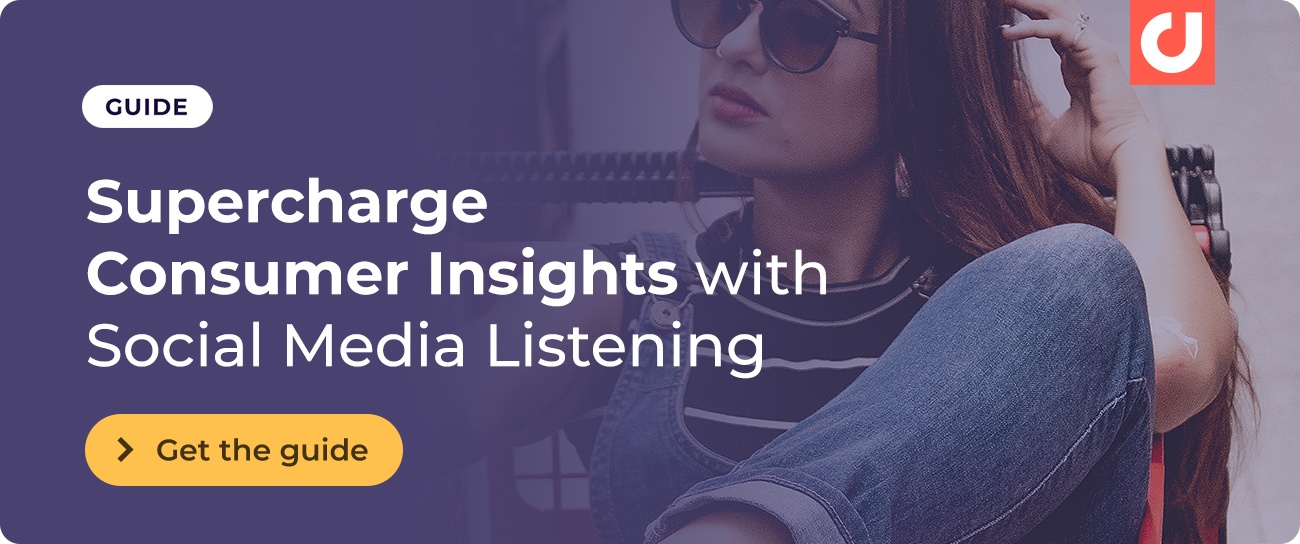Case Studies: Product Marketing Strategies Built on Consumer Insights
We often hear of companies who’ve seen massive improvements in sales, revenue and market share through the use of consumer insights from social media. But just how do they do this?
Scoping a consumer insights can be overwhelming, especially with an estimated 4.4 ZB of data floating around the internet. Where do you start, and what can you really do with social insights?
Here are four client use cases, where consumer insights from social media and the internet were analyzed to boost product marketing strategies through the following methods:
- Optimize Product Features
- Differentiate From Competitors
- Improve Product Offerings
- Inform Product Launches
1. Optimize Product Features
Challenge
A company providing real-time driver assistance technology systems and related services wanted to understand customer needs better.
This community-based brand with a robust membership of 5 million users in Europe paid close attention to user discussions on social media to optimize their product features and offerings.
Solution
Using Digimind, the company carried out a global brand listening project about its products on social media, review sites, and forums. Data on key features were classified from the most desired to the least desired.
Results
The company developed and launched a new product based on needs expressed by consumers on social media. Such needs included: reverting back to physical buttons from touch buttons, and a permanent display of driving data on-screen. Overall, this new product achieved:
- 3rd largest share of voice across their product portfolio
- 86% positive sentiment
- More than 17% increase in estimated reach
2. Differentiate From Competitors
Challenge
An online dating brand needed to differentiate itself in a highly competitive market, and increase the number of sign-ups on their platform.
Solution
To do this, they looked at key insights from consumers’ conversations on social media, and where they were happening to determine important factors for users and where discussions were happening.
Results
While the brand’s social listening project initially focused on Facebook conversations, they soon realized many conversations also occurred on Twitter, which expanded new possibilities for listening.
With the help of insights from social media, the marketing team detected an untapped pool of target customers: single parents struggling to meet new people. This led the company to launch a new product campaign targeting this demographic.
3. Improve Product Offerings
Challenge
A global insurance company launched a new health insurance offer in Southeast Asia. As this product was launched a little later than similar offerings from their competitors, the company needed to differentiate their product offering to encourage people to choose them.
Solution
The marketing team monitored online comments and complaints around competitors’ products before launching their offer. This gave them ample opportunity to differentiate themselves by creating a product that “filled the gaps” of unmet consumers’ needs.
Results
Although the product was launched 11 months later than competitors’, the product became a market leader within 4 months of launch, with a 47% online share of voice.
4. Inform Product Launches
Challenge
A global tech company wanted to push innovation by investing in new technologies, including augmented reality (AR) and virtual reality (VR) headsets, smart speakers, etc. Prior to launching their AR headsets in partnership with an upcoming blockbuster movie, the brand needed to develop a market entry strategy for this new product segment. To do so they launched a thorough exploration and understanding of the market.
Solution
Through social media listening, the company monitored public conversations around AR, and mapped and assessed existing competitors to estimate the main strengths and weaknesses of current products through their insights team.
Results
By analyzing the market, trends, and consumer sentiments, the company were able to develop a state of the art report on consumer opinions, categorized by age and socio-economic characteristics to inform their market entry and communications strategy.
The brand were also able to avoid potential pitfalls and barriers for advertising the product’s launch, as well as promote key features favored by consumers on social media. The final product ranked as one of the best commercial successes for an AR headset.
- 2 million mentions garnered
- 40% growth in brand awareness in the AR and VR market
- An increase of more than 10% positive sentiment towards the brand.
Written by Sophia Guan
With a background in marketing and psychology, Sophia loves to analyze and understand consumer behaviour through observations and data. After hours you’ll find her practicing yoga or baking sourdough.

